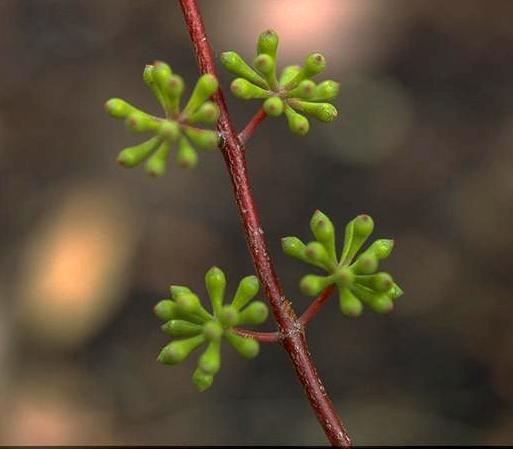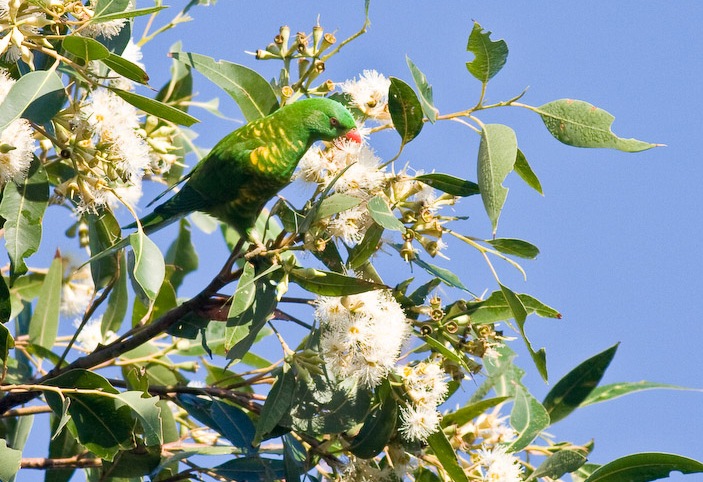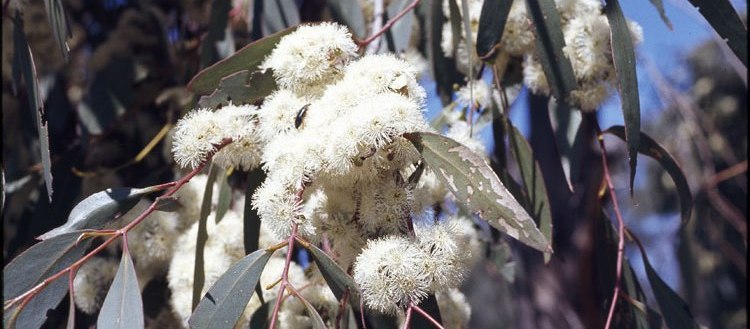Reproduction
Photo (below): Australian National Botanic Gardens
The broad leaf peppermint is
part of the group of plants called
 angiosperms, which includes
all flowering plants and plants that produce true fruits.
The Latin root of the name “Eucalyptus”
translates to mean “well-covered”, which describes the
protective opercula, or bud cap coverings, of
the
plants’ flowers.
angiosperms, which includes
all flowering plants and plants that produce true fruits.
The Latin root of the name “Eucalyptus”
translates to mean “well-covered”, which describes the
protective opercula, or bud cap coverings, of
the
plants’ flowers.
The bisexual flowers of
E. dives are white with
brightly-colored antheridia (pollen-producing structures within the
flowers) and produce an attractive aroma to lure insect pollinators.
These
insects feed on the flowers’ nectar and facilitate cross-pollination by carrying pollen from flower to flower on different trees.
A
Lorikeet parrot may occasionally be seen feeding on
eucalyptus nectar, as well.
Once pollinated, the flower ovary develops into small
fruits that look like golden yellow berries in the early season
and develop into clusters of conical, cup-shaped fruits containing
seeds. Each fruit capsule may
contain many seeds, but only a small fraction of the seeds are
embryonic in function. The rest are thought to provide
nutrition or protection to the developing embryonic seeds.
by carrying pollen from flower to flower on different trees.
A
Lorikeet parrot may occasionally be seen feeding on
eucalyptus nectar, as well.
Once pollinated, the flower ovary develops into small
fruits that look like golden yellow berries in the early season
and develop into clusters of conical, cup-shaped fruits containing
seeds. Each fruit capsule may
contain many seeds, but only a small fraction of the seeds are
embryonic in function. The rest are thought to provide
nutrition or protection to the developing embryonic seeds.
See how these reproductive strategies affect these plants' Classification.
Photo(above): Steve Happ
